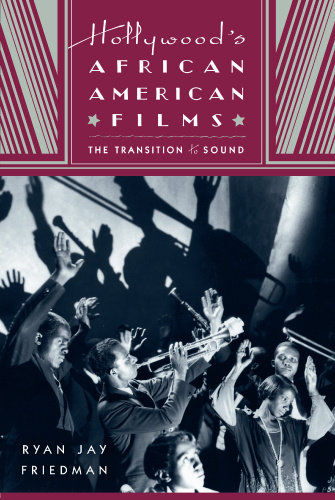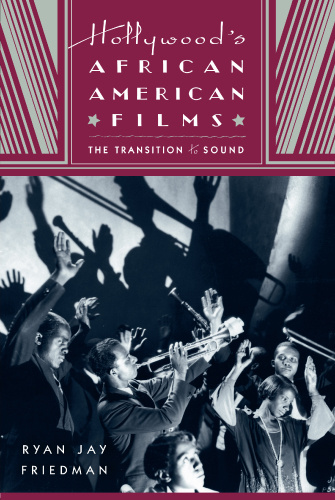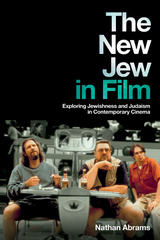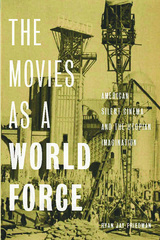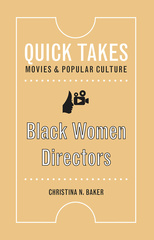Our shopping cart is currently down. To place an order, please contact our distributor, UTP Distribution, directly at utpbooks@utpress.utoronto.ca.
Hollywood's African American Films
The Transition to Sound
Rutgers University Press
In 1929 and 1930, during the Hollywood studios' conversion to synchronized-sound film production, white-controlled trade magazines and African American newspapers celebrated a "vogue" for "Negro films." "Hollywood's African American Films" argues that the movie business turned to black musical performance to both resolve technological and aesthetic problems introduced by the medium of "talking pictures" and, at the same time, to appeal to the white "Broadway" audience that patronized their most lucrative first-run theaters. Capitalizing on highbrow associations with white "slumming" in African American cabarets and on the cultural linkage between popular black musical styles and "natural" acoustics, studios produced a series of African American-cast and white-cast films featuring African American sequences. Ryan Jay Friedman asserts that these transitional films reflect contradictions within prevailing racial ideologies--arising most clearly in the movies' treatment of African American characters' decisions to migrate. Regardless of how the films represent these choices, they all prompt elaborate visual and narrative structures of containment that tend to highlight rather than suppress historical tensions surrounding African American social mobility, Jim Crow codes, and white exploitation of black labor.
Friedman illuminates the brief profusion of African American musical features and shorts at the dawn of sound cinema, showing how these films emerged out of their era and set the stage for Hollywood treatments of Black images and sounds for years to come.
'Hollywood's African American Films is a compelling exploration of the complex and often contradictory position(s) embodied by African American performers in early sound film. It is a model of rigorous research and textual analysis that analyzes Hollywood’s troubled nexus between race and representation and offers scholars new conclusions to old questions.'
Friedman illuminates the brief profusion of African American musical features and shorts at the dawn of sound cinema, showing how these films emerged out of their era and set the stage for Hollywood treatments of Black images and sounds for years to come.
'Hollywood's African American Films is a compelling exploration of the complex and often contradictory position(s) embodied by African American performers in early sound film. It is a model of rigorous research and textual analysis that analyzes Hollywood’s troubled nexus between race and representation and offers scholars new conclusions to old questions.'
Ryan Jay Friedman is an assistant professor in the department of English and the program in film studies at The Ohio State University.
Acknowledgments
Introduction: Negro Talking Pictures
1. "Black Became the Fad": White Highbrow Culture and Negro Films
2. "The Negro Invades Hollywood": The Great Migration, the Studios, and the Performance of African American Social Mobility
3. On (With the) Show: Race and Female Bodily Spectacle in Early Hollywood Sound Film
4. The Unhomely Plantation: Racial Phantasmagoria in Hallelujah
5. Blackness without African Americans: Check and Double Check and the Dialectics of Cinematic Blackface
Conclusion: "The Required Negro Motif" after the Transition to Sound
Notes
Index
Introduction: Negro Talking Pictures
1. "Black Became the Fad": White Highbrow Culture and Negro Films
2. "The Negro Invades Hollywood": The Great Migration, the Studios, and the Performance of African American Social Mobility
3. On (With the) Show: Race and Female Bodily Spectacle in Early Hollywood Sound Film
4. The Unhomely Plantation: Racial Phantasmagoria in Hallelujah
5. Blackness without African Americans: Check and Double Check and the Dialectics of Cinematic Blackface
Conclusion: "The Required Negro Motif" after the Transition to Sound
Notes
Index

